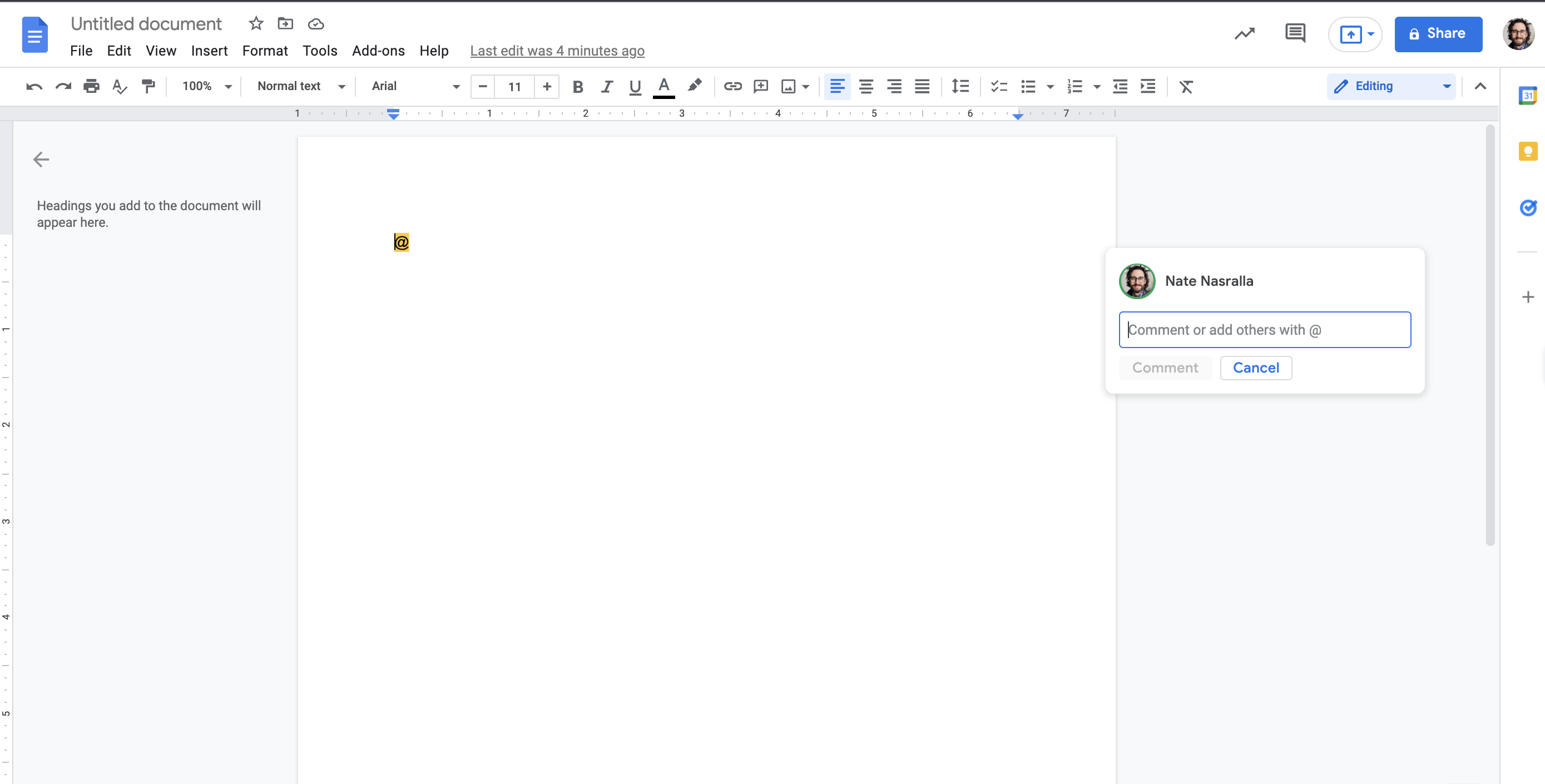The #1, Non-Obvious Sales Tool You Should Be Using


I love me a great sales tool debate.
Sales reps can grow comfortable with most tools if given enough time, but talk to a sales enablement pro and you'll hear some strong opinions. The obvious debates include:
- HubSpot vs Salesforce
- Outreach vs SalesLoft
- Gong vs Chorus
Yet, I find there's one, non-obvious tool that's missing from the debate. It's not shown on any G2 Grid or Gartner Magic Quadrant, but it's helped my sales teams close millions of dollars in new business.
Google Docs.
Um, excuse me? Google Docs? That's not a sales tool.
Or is it? Let me explain, by way of Jeff Bezos.
Jeff Bezos & B2B Sales
I know, this post just got weirder. Jeff Bezos isn't typically associated with B2B sales.
But, his 1997 shareholders letter first gave me the idea of introducing Google Docs to my team's sales process. In that letter, the Space Cowboy wrote:
We don’t do PowerPoint presentations at Amazon. Instead, we write narratively structured memos... The great memos are written and re-written, shared with colleagues who are asked to improve the work, set aside for a couple of days, and then edited again with a fresh mind. They simply can’t be done in a day or two.
So what does Amazon's internal communication process have to do with external, B2B sales?
At the risk of overstating it, everything.
You see, B2B sales is internal communication.
It's the process of aligning, on average, six to ten stakeholders, who often hold conflicting views of a problem and the right way to solve it. Debate over this happens during internal meetings — without sales reps in the room.
That's where the category we're building, Buyer Enablement, comes in. Along with the most basic Buyer Enablement tool: Google Docs.
When I first began experimenting with the best approach to Buyer Enablement, we started with a completely blank Google Doc. It gave us the workspace we need to start crafting a story with our prospects.
This way, prospects were proud to champion our enablement materials to their buying team, and we could help influence their narrative.
The Missing Step in B2B Sales
If you believe B2B sales is internal communications, then you're aware of the incredibly important role enablement materials will play in won and lost deals.
Enablement materials are how you influence your message, and support your buyers, when you can't be in the room with them.
But Sales Enablement materials (and platforms) haven't evolved beyond templates, case studies, and marketing material. They're posted in Digital Sales Rooms now. But beyond that, sales and marketing still owns the message. Not buyers.
In our research with over 290 B2B buyers in the last year, those who championed a new purchase shared two options for how they create buy-in:
- I'll wing my pitch. I won't send my boss sales materials that don't speak to their mindset, specifically. There's the risk that my message won't resonate.
- I'll build my own materials. I'll grab excerpts from sales decks and demos, put it in our brand, and use my own words to explain the value.
There's another option, however. It's the missing step in most B2B sales processes: building your buyer's internal message and enablement materials, together. When you make this shift, you'll notice four things.
1. Deeper discovery increases pipeline quality.
By putting your buyer's words down on paper (or screen) for them to read, you force them, in a loving way, to form a point of view.
As you add their thoughts into your workspace, you're giving them something to reflect on. It's easy to change and avoid committing to a point of view in conversation.
But written words— just like Bezos shared — helps your buyer distill their problems into specific points that let them consider:
"Is this really the right way to frame our problem?"
"Am I missing other issues that could be driving our problem?"
"Does everyone on my team else feel the same way I do?"
As a result, you'll uncover more information upfront with your prospects, and spend less time chasing unqualified deals down the road.
2. Buyers buy into your process, plus your product (and stop ghosting you).
The worst case sales scenario isn't a no. It's a no-reply.
It's what makes you think, "Maybe they're just busy. I'll push out the close date a bit and give it more time." Ghosting happens buyers aren't committed to your process, and don't bother setting or showing up for follow-up meetings.
The fix is becoming a part of your buyer's team. A trusted sounding board. Trust is built when we feel understood, and we feel understood when someone reflects our own words back to us. When you're seen as an ally who's on their side of the table, prospects set and show up to meetings.
This is exactly what happens while building enablement materials alongside your buyers. They get to how the sales content you're creating directly reflects their beliefs, their words, and your conversations.
3. Crisp, clutter-free storylines that capture decision makers.
The real sales process doesn't start until you and your champion(s) have put together the problem-solution puzzle. Now, they've got to show it off to others on their team, including their decision makers.
The thing is most decision makers will only review a purchase decision in 5 to 10 minute increments. They're busy, and overloaded with information.
Which means you've got to enable your champion to present a crisp, clutter-free storyline.
Its your job as a seller, and an expert in your product, to help your buyer develop a winning narrative. And like Bezos said, crafting a clear narrative can't be done in a day, so don't leave your prospect's pitch to chance. Create a shared workspace, draft, and iterate on a short, clear pitch together.
4. Buyers want to build solutions, not purchase products.
Building something new brings a sense of pride and ownership. Building is also what keeps buyers engaged because, like you, they're problem solvers. They're out to create solutions — not just purchase products.
What's more, the reality is a solution is far more than a product. It's the sum of all the consensus building, onboarding, and adoption of a product. That means a solution can't be created without your buyer. Because without them, you just have a product.
Your job, then, is to help buyers package a solution inside of materials that create consensus, and pave the way for adoption.
You can do this by turning sales meetings into working sessions, where you make it easy for prospects to help craft their own materials, in their own words.
FAQ's on:
Why stop now?
You’re on a roll. Keep reading related write-up’s:
Draft with one click, go from DIY, to done-with-you AI
Get an executive-ready business case in seconds, built with your buyer's words and our AI.

Meet the sellers simplifying complex deals
Loved by top performers from 500+ companies with over $250M in closed-won revenue, across 19,900 deals managed with Fluint

Now getting more call transcripts into the tool so I can do more of that 1-click goodness.



The buying team literally skipped entire steps in the decision process after seeing our champion lay out the value for them.


Which is what Fluint lets me do: enable my champions, by making it easy for them to sell what matters to them and impacts their role.








